1、介绍
AOP(面向切面编程)对OOP(面向对象编程)是一种补充,它提供了另一种程序结构的思路。OOP的模块单元是class,而AOP的模块单元是aspect。Spring中一个关键的组件是AOP框架,然而,Spring IoC容器并不依赖于AOP,也就是说如果你不想用AOP的话可以不用。
在Spring框架中AOP用来做什么呢?
- 提供声明式的企业服务,特别是代替EJB的声明式服务。最重要的的服务是声明式事务管理。
- 允许用户实现自定义的aspect
1.1、AOP概念
- Aspect(方面):横切多个class的一个关注点的模块化。事务管理是一个很好的例子。在Spring AOP中,aspect可以用普通类或者带有@Aspect注解的普通类来实现。
- Join point(连接点):程序执行期间的一个点,比如方法的执行或者异常的处理。在Spring AOP中,一个连接点总是代表一个方法执行。
- Advice(通知):一个aspect在一个特定的连接点所采取的动作。通知的类型包括"around"、"before"、"after"。许多AOP框架,包括Spring也是,它们把一个通知作为一个拦截器,维护一个拦截器链环绕在连接点上。
- Pointcut(切入点):匹配连接点的一个谓词。Advice关联一个切点表达式。Spring默认用AspectJ切点表达式。
- Target object(目标对象):被一个或多个aspect通知的对象。在Spring AOP中是用运行时代理来实现的,因此这个对象总是一个代理对象。
- AOP proxy(AOP代理):为了实现aspect而被AOP框架所创建的一个对象。在Spring框架中,一个AOP proxy可能是一个JDK动态代理或者一个CGLIB代理。
1.2、通知的类型
- Before advice(前置通知):在一个连接点之前执行的通知,但是没有能力阻止后面的执行(除非它抛异常)
- After returning advice(返回通知):在一个连接点正常执行完以后执行的通知:例如,在一个不抛异常的方法返回时执行
- After throwing advice(异常通知):如果方法因为抛出异常而退出了才会执行的通知
- After (finally) advice(后置通知):无论连接点正常退出还是异常退出都会执行
- Around advice(环绕通知):环绕一个连接点比如方法调用的通知。这是最强的一种通知。环绕通知可以在方法调用之前或之后执行自定义的行为。它也负责选择是否处理连接点方法执行,通过返回一个它自己的返回或者抛出异常。环绕通知是用得最普遍的一种通知。
1.3、Spring AOP的能力和目标
Spring AOP用纯Java实现。目前只支持方法执行的连接点,字段拦截没有实现。
1.4、AOP Proxies
Spring AOP defaults to using standard JDK dynamic proxies for AOP proxies. This enables any interface (or set of interfaces) to be proxied.
Spring AOP can also use CGLIB proxies. This is necessary to proxy classes rather than interfaces.
CGLIB is used by default if a business object does not implement an interface. As it is good practice to program to interfaces rather than classes; business classes normally will implement one or more business interfaces.
默认JDK动态代理,如果对象没有实现接口则用CGLIB
2、@AspectJ支持
@AspectJ是用注解来标注常规的Java类的一种声明aspect的风格。
2.1、启用@AspectJ支持
你需要开启Spring对于基于@AspectJ aspects的Spring AOP配置的支持,和autoproxying beans的支持。autoproxying的意思是如果Spring检测到一个bean被一个或多个aspect通知,它将自动为这个bean生产代理以拦截方法调用并确保通知被执行。
可以用XML或者Java配置的方式来开启对@AspectJ的支持。你需要确保在你的工程的classpath下有aspectweaver.jar。
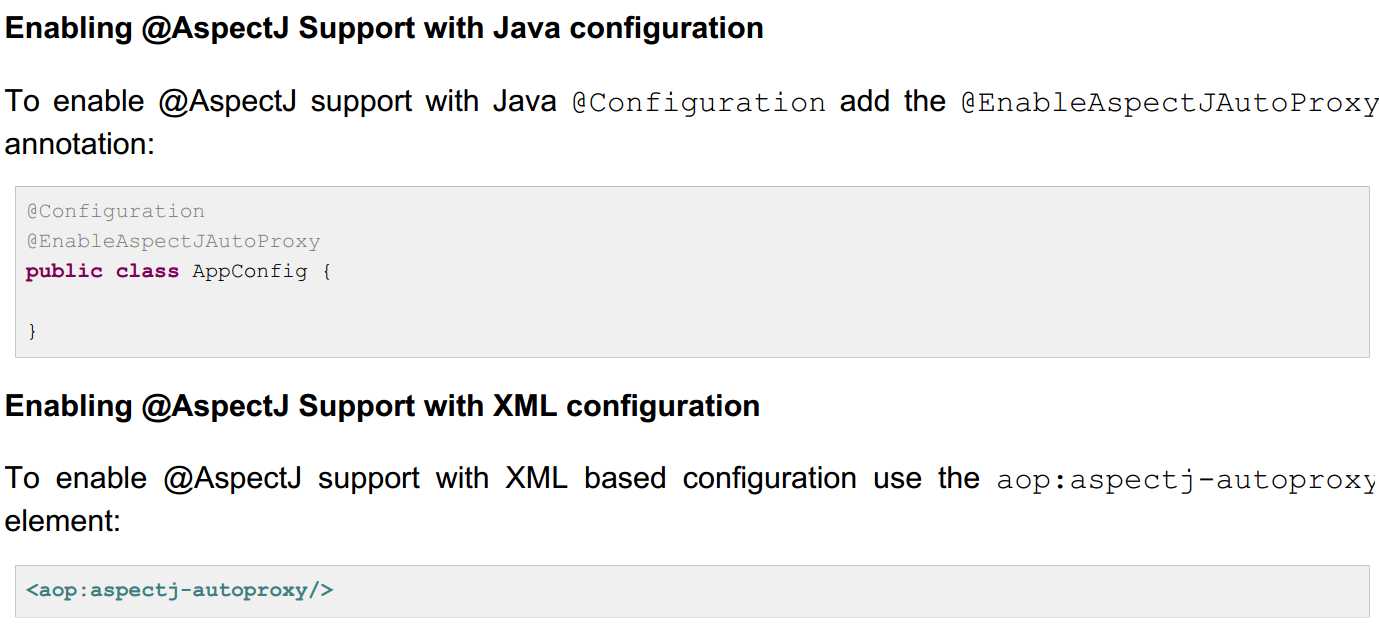
2.2、声明一个aspect
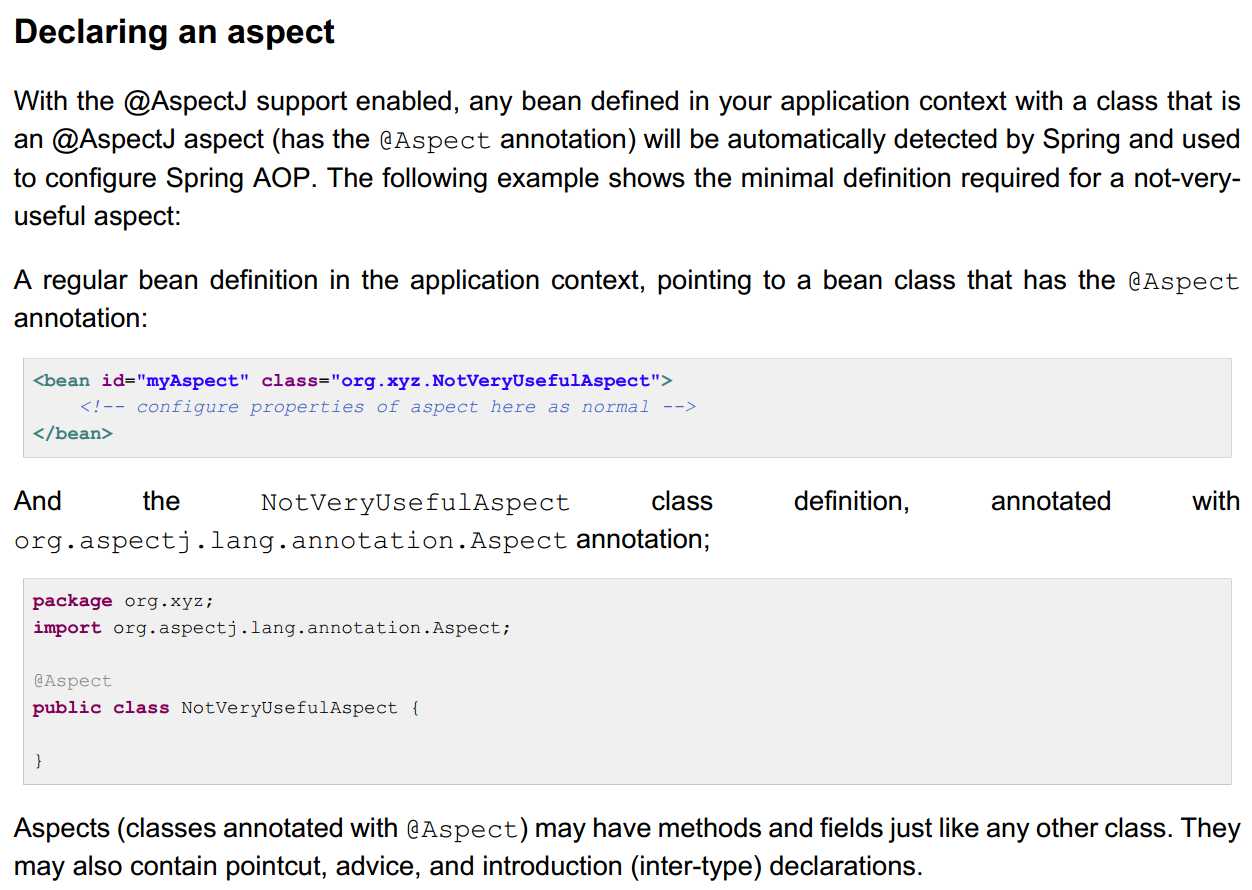
2.3、声明一个pointcut
A pointcut declaration has two parts: a signature comprising a name and any parameters, and a pointcut expression that determines exactly which method executions we are interested in. In the @AspectJ annotation-style of AOP, a pointcut signature is provided by a regular method definition, and the pointcut expression is indicated using the @Pointcut annotation (the method serving as the pointcut signature must have a void return type).
声明一个pointcut有两部分:一个签名和一个切点表达式。签名由一个name和任意参数组成,切点表达式决定对哪些方法执行感兴趣。在注解风格的AOP中,一个pointcut签名就是一个常规方法定义,而pointcut表达式用@Pointcut注解来标识(作为pointcut签名的方法的返回值必须是void)

Spring AOP还支持下面这样的切点表达式:
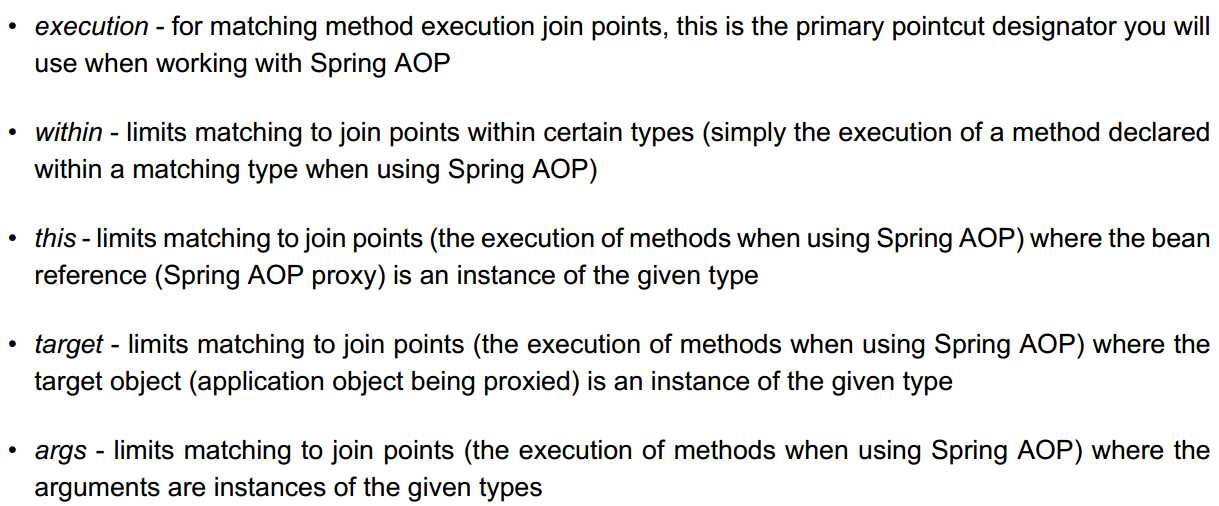
切点表达式可以组合使用
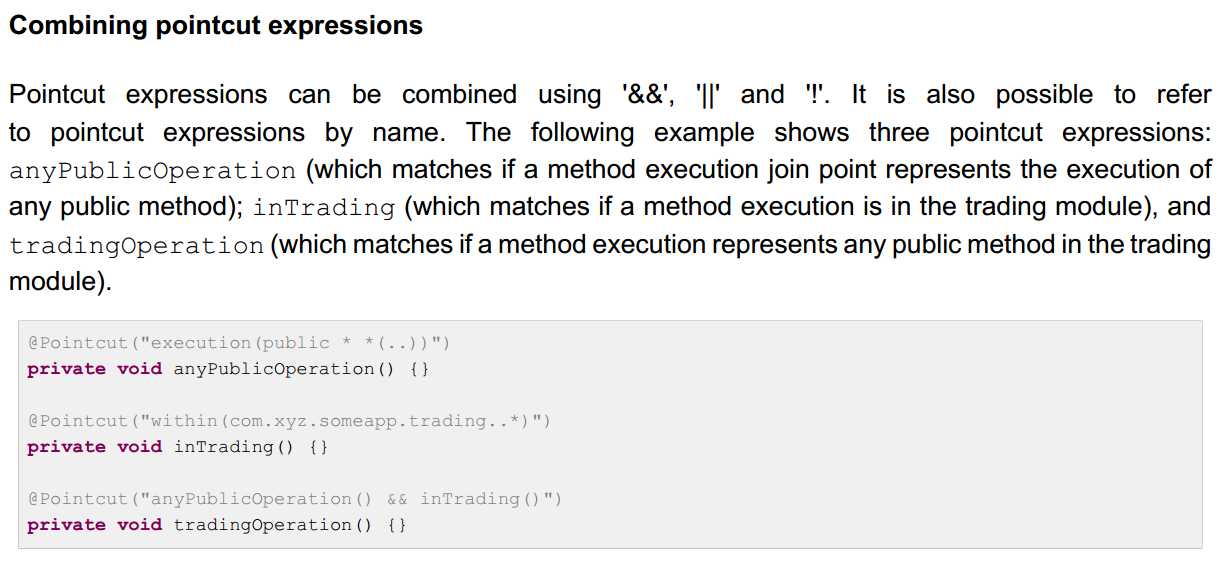
The format of an execution expression is:

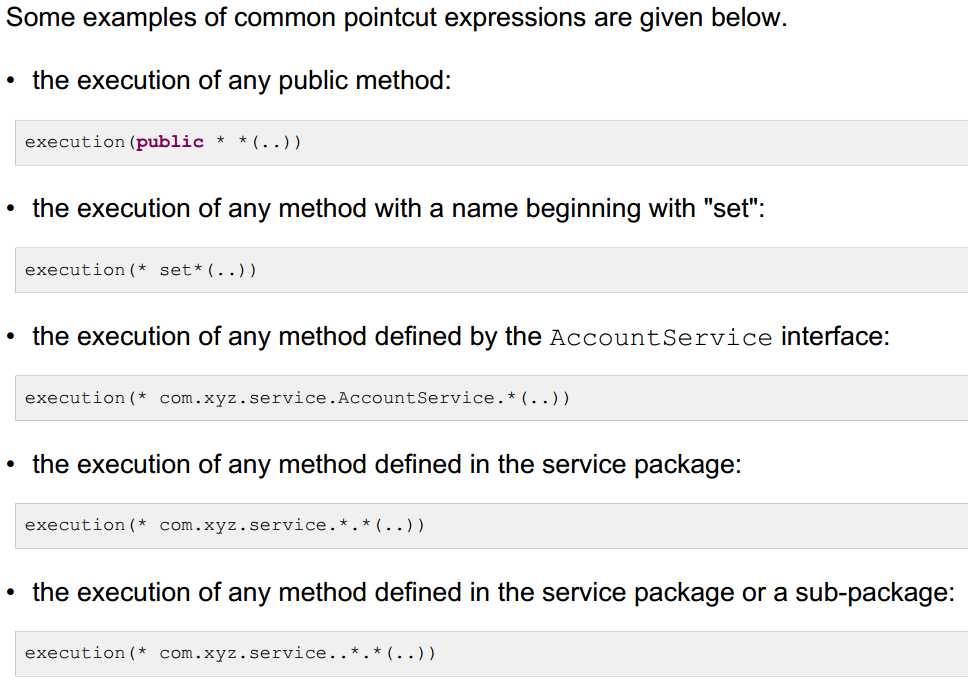
2.4、声明advice
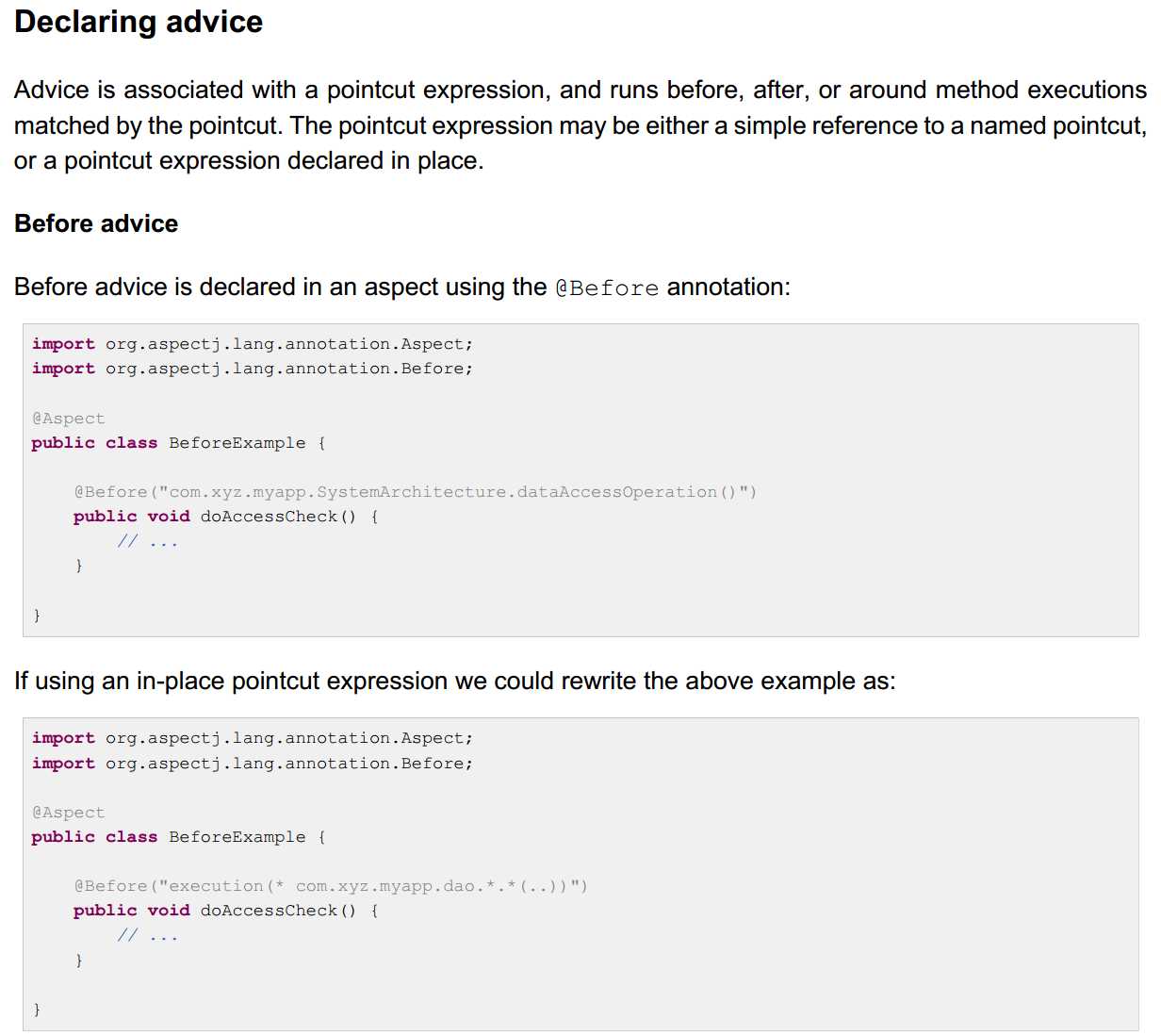
3、基于XML格式的AOP支持

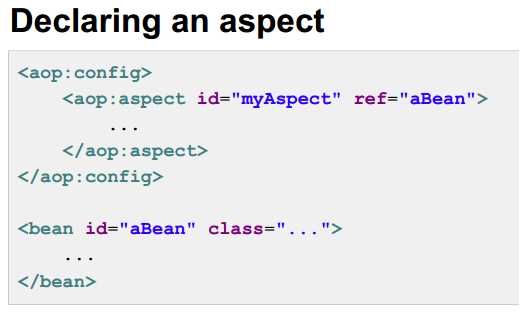
the keywords ‘and‘, ‘or‘ and ‘not‘ can be used in place of ‘&&‘, ‘||‘ and ‘!‘ respectively
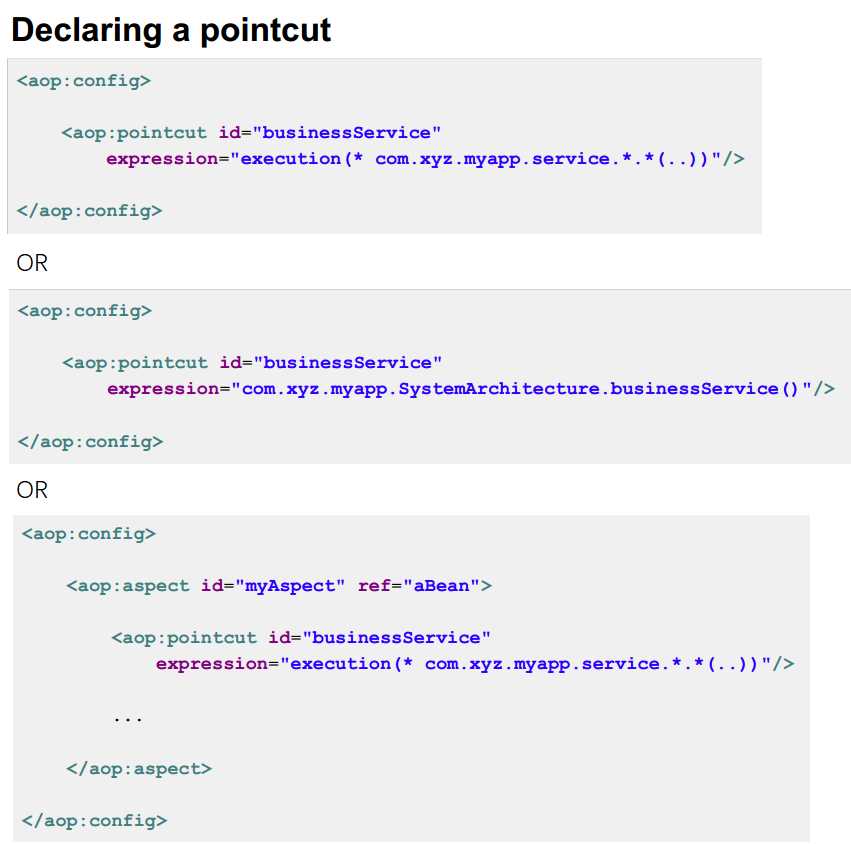
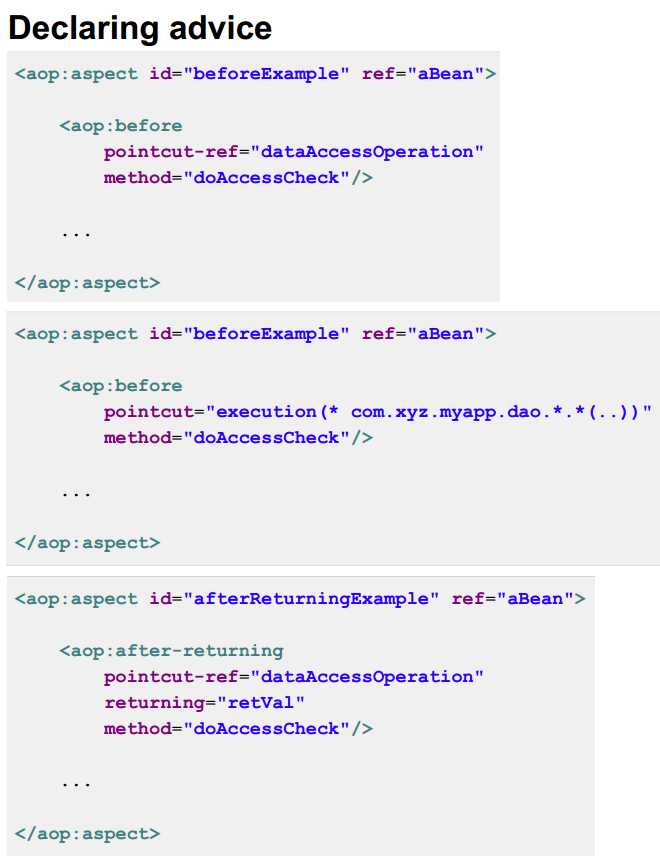

4、选择哪种AOP声明方式
4.1、Spring AOP or full AspectJ?

4.2、@AspectJ or XML for Spring AOP?
如果你选择用Spring AOP,那么你可以选择用@AspectJ或者XML风格。推荐用@AspectJ。
5、代理机制
Spring AOP用JDK动态代理或者CGLIB来创建目标对象的代理。(首选JDK动态代理)
如果被代理的目标对象至少实现了一个接口,那么JDK动态代理将会被使用。而且,目标对象实现的所有接口都将被代理。
如果目标对象没有实现任何接口,那么一个CGLIB代理将会被创建。
如果你想强制使用CGLIB代理也是可以的,但是你需要考虑一个问题,那就是final方法不能被通知,因为它们不能被覆盖。
如果你想强制使用CGLIB代理可以这样做,二者选其一即可:

5.1、理解AOP代理
Spring AOP is proxy-based.(Spring AOP是基于代理的)
理解这个语义是极其重要的。
参考
《Spring Framework Reference Documentation》 4.3.14.RELEASE
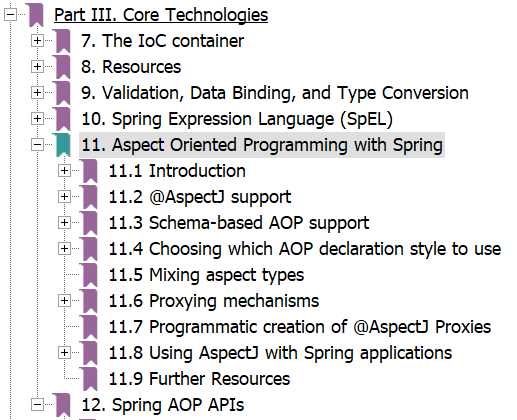
Spring文档下载地址
http://repo.springsource.org/libs-release-local/org/springframework/spring/
